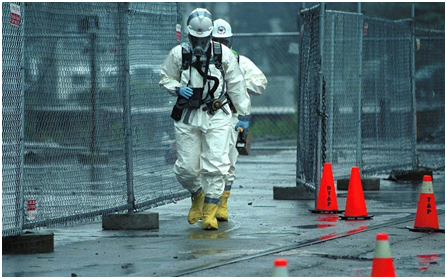
Dealing With Reactive Chemicals
When we think dangerous chemicals a whole array of compounds come to mind. But, the description of dangerous reactive chemicals is best stated by the University of Iowa Environmental Health and Safety:
The category “Reactive” is a term given to a chemical class that displays a broad range of reactions. This category includes explosives, oxidizers, reducers, water sensitive, acid sensitive, air sensitive and unstable chemicals. These substances are capable of producing toxic gases, explosive mixtures, being explosive, reacting with water violently, or they may contain cyanide or sulfide. Reactive chemicals exhibit moderate to extremely rapid reaction rates and include materials capable of rapid release of energy by themselves (self-reaction or polymerization), and/or rates of reaction that may be increased by heat or pressure or by contact with incompatible substances.
Reactive chemicals generally are broadly classified into two groups: those that may explode and those that do not. Reactivity of individual chemicals in specific chemical classes (e.g., alkali metals) varies considerably. This rate of activity may also vary as a result of aging or contamination. Reactives may be further subdivided and placed into the following eight classes based upon their chemical behavior.
Class I
Chemicals normally unstable that readily undergo violent change without detonating.
Class II
Chemicals that react violently with water.
Class III
Chemicals that form potentially explosive mixtures with water.
Class IV
Chemicals that, when mixed with water, generate toxic gases, vapors or fumes in quantity sufficient to present a danger to human health or the environment.
Classes V through VIII are considered sufficiently dangerous and only highly trained individuals should be tasked with responding to spills of this type.
The most common and not always effective forms of responding to spills of manageable size is through the use of fire-fighting foam, mineral based absorbents or the use of specially constructed chemical sewer systems.
However, many of these types of absorbents and adsorbents can cause even more violent reactions when used to respond to reactive chemical spills. Consulting the Chemical Reactivity Worksheet (CRW) is always a good idea when determining how to respond. It is always wise to be cautious and even if you are very qualified always check this worksheet.
PetroGuard is one of the most efficient and effective solidifying absorbents used for many different types of reactive chemicals. We recommend that if the use of PetroGuard is contemplated, a test should be run under a safety hood to confirm compatibility with the chemical in question. Please contact us for more information.
